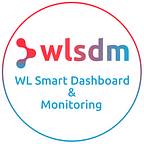WLSDM Blog: Oracle Internet Directory Component Monitoring
In this blog, we will examine the changes in OID 11g and 12c and how to track the component’s health through WLST and WLSDM. Please read complete blog post about the structure of Oracle Internet Directory and related OID component monitoring in WLSDM.
What is Oracle Internet Directory?
Oracle Internet Directory is an LDAP Directory that uses an Oracle Database for storage. OID provides user management and group information from a central location within complex systems. The information can represent any resources that require management, for instance :
- User names, titles and security credentials
- Group names, owners and members
- Information about shared resources
Oracle Internet Directory Record Structure
Oracle Internet Directory itself is a C-based process. Its only run time dependency is the Oracle Database. The information in the directory is available to different clients, such as single sign-on solutions, email clients and database applications. Clients communicate with a directory server by means of the Lightweight Directory Access Protocol (LDAP).
Difference of Component Management Between OID 11g and 12c
The most important change between the Oracle Internet Directory 11g and 12c versions is the updates to the component management. The opmnctl structure in 11g can be removed and the component management can be done via WLST. The startComponent and stopComponent scripts under the $DOMAIN_HOME/bin directory are also changes that came with OID 12c.
Difference Between OID 11g and 12c
11g:
- opmnctl createcomponent -adminHost webLogicHostName
-adminPort webLogicPort
-adminUsername weblogicAdminUsername
-adminPasswordFile text_file_containing_admin_password
-componentType OID
-componentName componentName - opmnctl deletecomponent -adminHost webLogicHostName
-adminPort webLogicPort
-adminUsername weblogicAdminUsername
-adminPasswordFile text_file_containing_admin_password
-componentType OID
-componentName componentName - opmnctl status
- opmnctl startproc ias-component=‘instance-name’
- opmnctl stopproc ias-component=‘instance-name’
- opmnctl stopall
- opmnctl startall
12c:
$DOMAIN_HOME/bin/startComponent $_instance_name
$DOMAIN_HOME/bin/stopComponent $_instance_name
Over wlst.sh/cmd
- oid_createInstance(instanceName=‘instance-name’, machine=‘host_machine’, port = nnnn, sslPort = nnnn, host = ‘hostname’)
- oid_deleteInstance(instanceName = ‘instance-name’)
- oid_listInstances()
- oid_instanceStatus(instanceName=‘instance-name’)
- start(name=‘instance-name’)
- stop(name=‘instance-name’)
Monitoring Components on WLST
1 — Run wlst.cmd/sh
2 — Connect target server
3 — oid_listInstances()
4 — oid_instanceStatus(instanceName=‘instance-name’)
Monitoring Component States on WLST
Monitoring Components on WLSDM
Go to “Smart Dashboards > FMW Component Health” page.
Active components’ health states can be view in FMW Component Health page.
Health records can be monitor in “FMW Health Health History” Panel.
Email notifications will be generate when components are shutdown, running, not reachable or not healthy.
WLSDM installation is really easy and you can setup a complete monitoring infrastructure in less than 5 minutes. If you want to try then go to WLSDM download page. (Download link is available at below)
